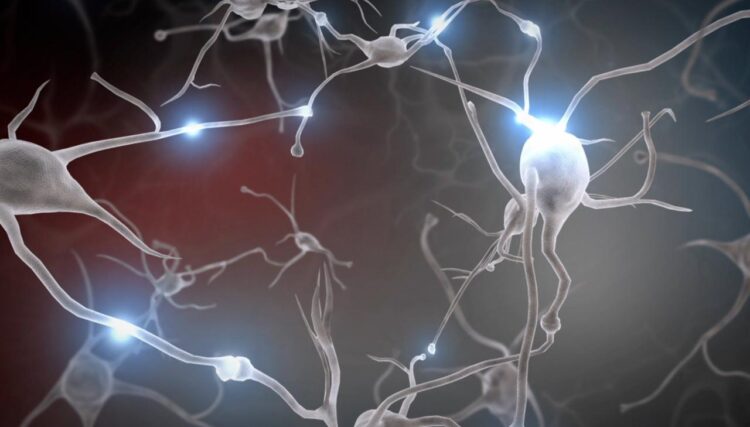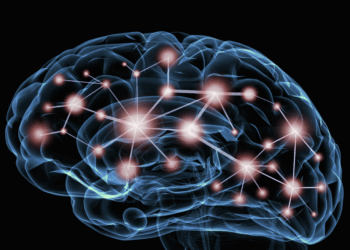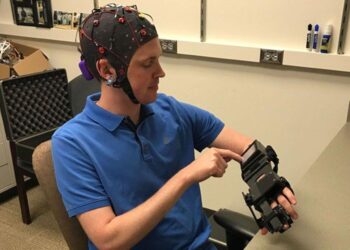Childhood adversity—ranging from emotional neglect and physical abuse to chronic poverty—can leave lasting imprints on brain architecture. Recent neuroscientific research reveals that severe stress during formative years disrupts neural circuits that govern emotion regulation, learning, and executive function. This article explores the multifaceted ways in which early hardship alters brain development, examines the biological mechanisms at play, and outlines strategies to foster resilience and recovery.
Understanding Childhood Adversity
Adversity in childhood encompasses a broad spectrum of experiences. Common types include:
A. Emotional Abuse and Neglect
-
Persistent lack of affection, support, or verbal hostility.
B. Physical Abuse -
Intentional bodily harm by caregivers or others.
C. Sexual Abuse -
Inappropriate sexual conduct imposed on a minor.
D. Household Dysfunction -
Exposure to domestic violence, parental substance abuse, or mental illness.
E. Economic Hardship -
Chronic poverty, food insecurity, or unstable housing.
Each form of adversity can activate the body’s stress response system. When the stress is severe or prolonged—termed “toxic stress”—it overwhelms a child’s developing brain, with consequences that can extend into adulthood.
The Brain’s Stress Response System
Under threatening circumstances, the brain triggers a cascade of neuroendocrine reactions:
-
Hypothalamic–Pituitary–Adrenal (HPA) Axis Activation
-
The hypothalamus releases corticotropin-releasing hormone (CRH).
-
The pituitary gland secretes adrenocorticotropic hormone (ACTH).
-
The adrenal glands produce cortisol, the primary stress hormone.
-
-
Sympathetic Nervous System (SNS) Engagement
-
Releases adrenaline (epinephrine) and noradrenaline.
-
Increases heart rate, blood pressure, and glucose availability.
-
While acute stress responses are adaptive, chronic HPA axis activation and elevated cortisol damage neurons—particularly in brain regions like the hippocampus, prefrontal cortex, and amygdala.
Key Brain Regions Affected
A. Prefrontal Cortex (PFC)
-
Governs decision‑making, impulse control, and working memory.
-
Adversity-related cortisol excess impairs dendritic growth, reducing volume and connectivity.
B. Hippocampus
-
Central to learning and memory consolidation.
-
Chronic stress shrinks hippocampal neurons, leading to memory deficits.
C. Amygdala
-
Processes fear and emotional salience.
-
Repeated threat exposure heightens amygdala reactivity, predisposing individuals to anxiety and hypervigilance.
D. Corpus Callosum
-
Connects left and right hemispheres.
-
Early neglect can reduce callosal thickness, impairing interhemispheric communication.
Neuroimaging Insights
Advances in magnetic resonance imaging (MRI) and functional MRI (fMRI) allow researchers to visualize how childhood hardship manifests in brain structure and function:
-
Structural MRI Studies
-
Show reduced gray matter volume in the PFC and hippocampus of maltreated children.
-
Document white matter integrity loss in tracts like the uncinate fasciculus, linking limbic regions to the PFC.
-
-
Resting‑State fMRI
-
Reveals altered connectivity within the default mode network (DMN), affecting self‑referential thought and emotion regulation.
-
-
Task‑Based fMRI
-
Demonstrates exaggerated amygdala activation when viewing fearful faces.
-
Finds reduced PFC engagement during executive‑function tasks.
-
These imaging findings correlate with behavioral outcomes such as poor academic performance, impulsivity, and emotional dysregulation.
Molecular and Cellular Mechanisms
At the microscopic level, toxic stress influences:
A. Glucocorticoid Receptor Regulation
-
Excess cortisol downregulates receptor expression, blunting feedback inhibition of the HPA axis.
B. Synaptic Plasticity
-
Stress disrupts long‑term potentiation (LTP) in the hippocampus, impeding learning.
C. Neuroinflammation
-
Elevated pro‑inflammatory cytokines (e.g., IL‑6, TNF‑α) damage neural tissue.
D. Neurogenesis
-
Adversity suppresses the birth of new neurons in the dentate gyrus of the hippocampus.
These processes compound over time, creating a neurobiological environment that fosters vulnerability to mental health disorders.
Behavioral and Psychological Consequences
Children exposed to early adversity often exhibit:
-
Emotional Dysregulation
Difficulty modulating intense feelings of anger, sadness, or fear. -
Cognitive Delays
Impaired attention, working memory deficits, and slower processing speed. -
Social Difficulties
Trouble forming secure attachments, leading to distrust or aggression in relationships. -
Increased Psychiatric Risk
Elevated incidence of depression, anxiety disorders, post‑traumatic stress disorder (PTSD), and substance abuse.
Longitudinal studies indicate that these risks persist into adulthood, contributing to impaired occupational outcomes, chronic health conditions, and reduced life expectancy.
The Role of Genetics and Epigenetics
Not all children facing the same adversity experience identical outcomes. Individual differences arise from:
-
Genetic Variation
-
Polymorphisms in genes such as FKBP5 (regulates glucocorticoid receptor sensitivity) can modulate stress responses.
-
-
Epigenetic Modifications
-
DNA methylation and histone modifications alter gene expression without changing the DNA sequence.
-
Early trauma can leave epigenetic “marks” on stress‑related genes, perpetuating heightened reactivity.
-
These factors interact with environmental influences to shape a child’s resilience or susceptibility to adversity.
Building Resilience: Protective Factors
Despite the profound impact of early hardship, many individuals demonstrate remarkable resilience. Key protective elements include:
A. Stable, Supportive Relationships
-
Consistent caregiving from at least one nurturing adult buffers stress effects.
B. Positive School and Community Environments
-
Access to safe spaces, mentoring programs, and extracurricular activities fosters competence and belonging.
C. Adaptive Coping Skills
-
Cognitive strategies like reframing negative thoughts promote emotional balance.
D. Access to Mental Health Services
-
Early intervention by therapists, social workers, and psychiatrists can mitigate long‑term damage.
Strengthening these protective factors can rewire neural circuits toward healthier patterns of stress regulation and social engagement.
Early Intervention and Therapeutic Approaches
1. Trauma‑Focused Cognitive Behavioral Therapy (TF‑CBT)
-
Helps children process traumatic memories, challenge maladaptive beliefs, and develop coping skills.
2. Parent–Child Interaction Therapy (PCIT)
-
Enhances caregiver sensitivity and consistent discipline, improving attachment security.
3. Mindfulness‑Based Interventions
-
Foster present‑moment awareness, reducing physiological arousal and amygdala hyperactivity.
4. Pharmacological Strategies
-
Selective serotonin reuptake inhibitors (SSRIs) can alleviate anxiety and depression; however, psychosocial treatments remain first‑line for young populations.
5. Educational and Social Supports
-
Tutoring, counseling, and peer‑support groups address academic and interpersonal challenges.
Implementing multi‑tiered systems of support in schools and communities ensures that children at varying levels of risk receive appropriate resources.
Policy Implications and Prevention
Addressing childhood adversity requires coordinated policy efforts:
-
Universal Screening
Routine assessment for adverse childhood experiences (ACEs) in pediatric and educational settings. -
Home Visiting Programs
Early support for at‑risk families reduces neglect and maltreatment. -
Economic Supports
Policies like paid parental leave, affordable childcare, and housing subsidies alleviate financial stress. -
Public Awareness Campaigns
Educating communities about the impact of toxic stress fosters empathy and early recognition.
By investing in prevention and early support, societies can curb the lifelong consequences of childhood hardship and promote healthier brain development.
Future Directions in Research
Emerging avenues of study include:
A. Precision Neuroscience
-
Integrating genomic, epigenomic, and neuroimaging data to tailor interventions.
B. Neurofeedback and Brain Stimulation
-
Exploring techniques like real‑time fMRI or transcranial magnetic stimulation (TMS) to recalibrate dysfunctional circuits.
C. Digital Therapeutics
-
Leveraging mobile apps and virtual reality to deliver scalable, engaging mental health support.
D. Longitudinal Cohort Studies
-
Tracking individuals from infancy through adulthood to map critical windows for intervention.
Advances in technology and cross‑disciplinary collaboration promise more effective ways to heal early‑life wounds and foster optimal neural outcomes.
Conclusion
Childhood adversity exerts powerful effects on the developing brain, disrupting neural architecture and biochemical pathways essential for emotional, cognitive, and social functioning. Nevertheless, the human brain retains a remarkable capacity for plasticity. Through timely intervention, supportive relationships, and systemic policy measures, it is possible to mitigate harm and cultivate resilience. Ongoing research will continue to refine our understanding of these processes, paving the way toward a future in which all children, regardless of background, have the opportunity to thrive.










